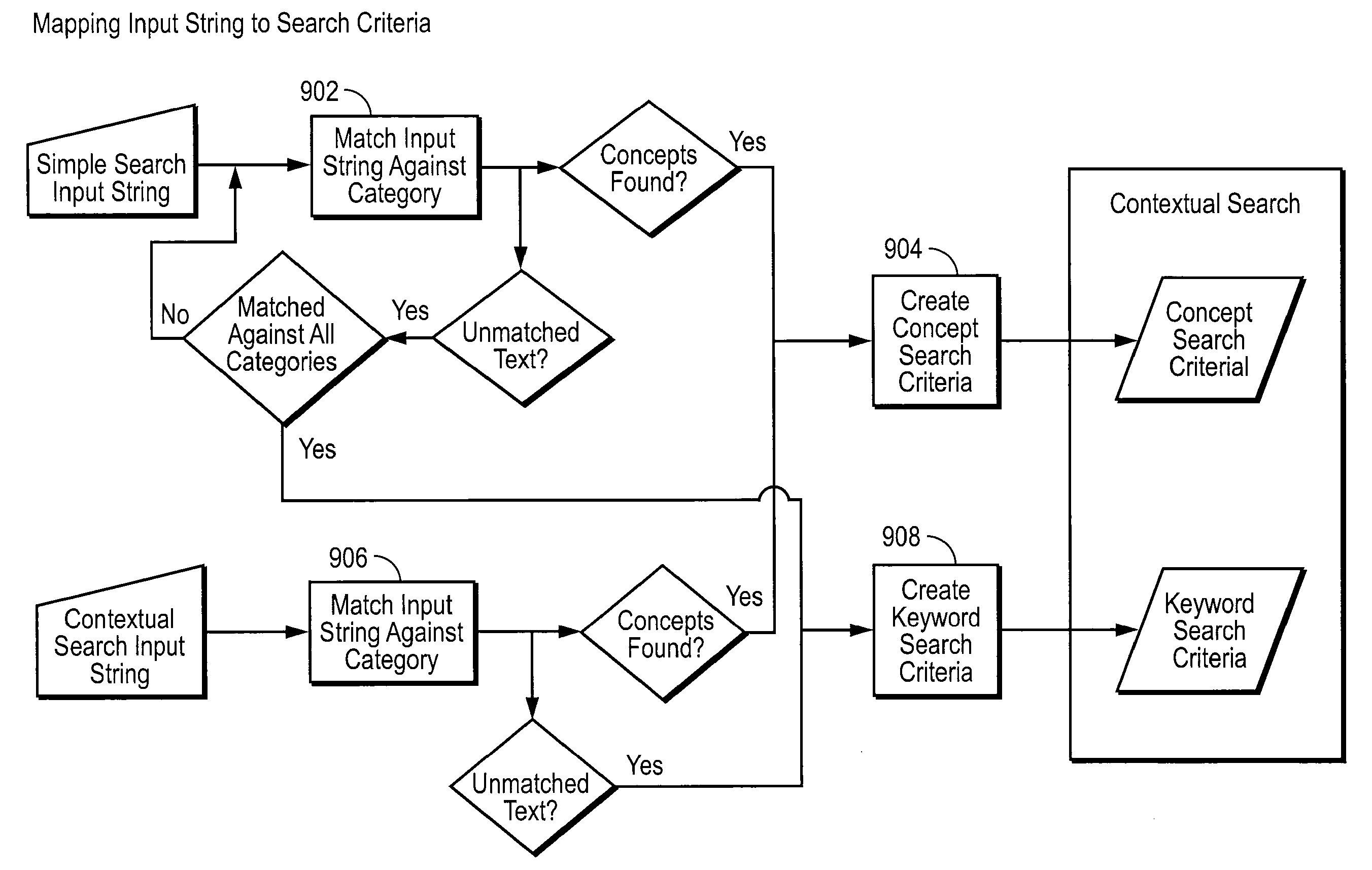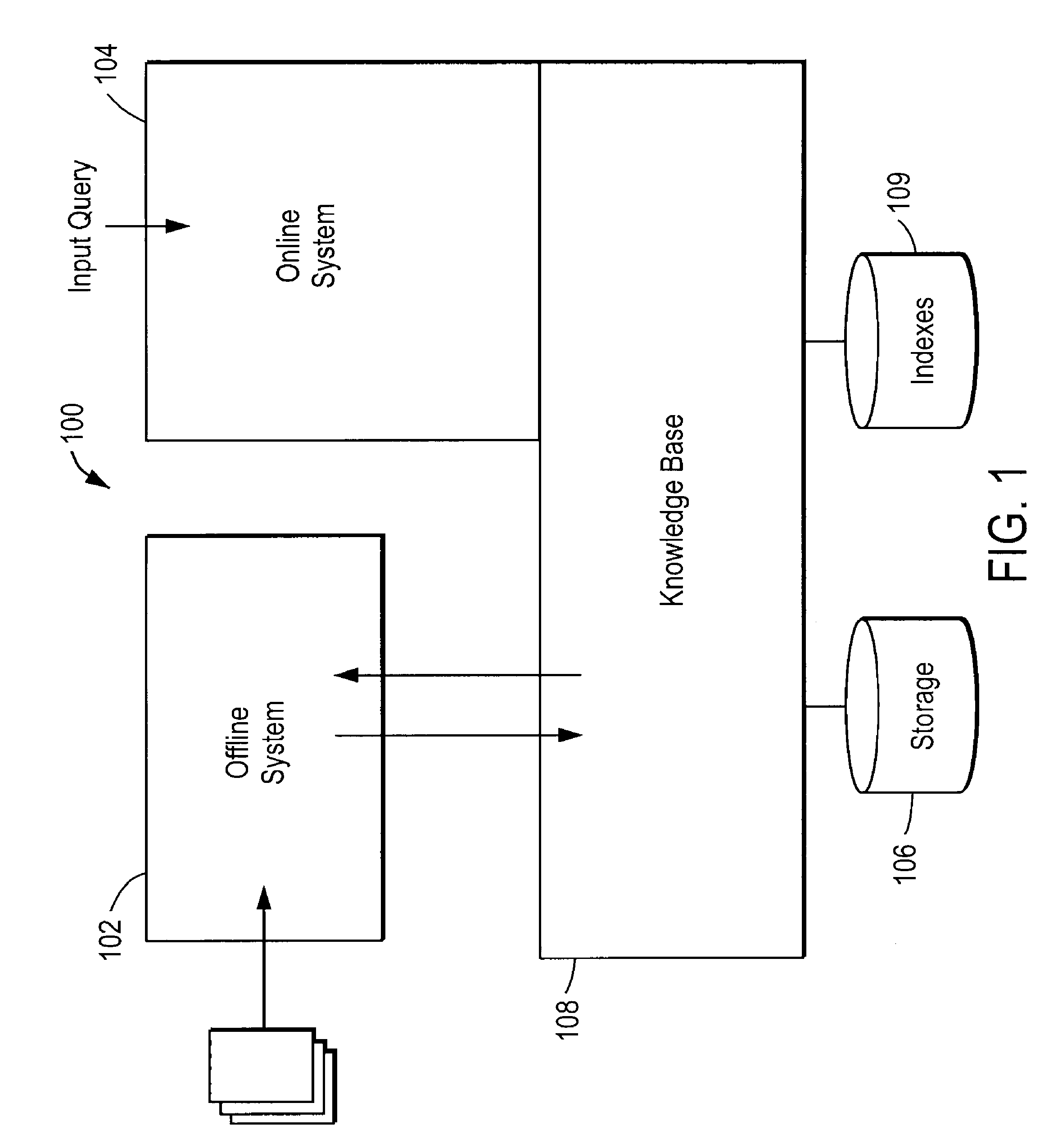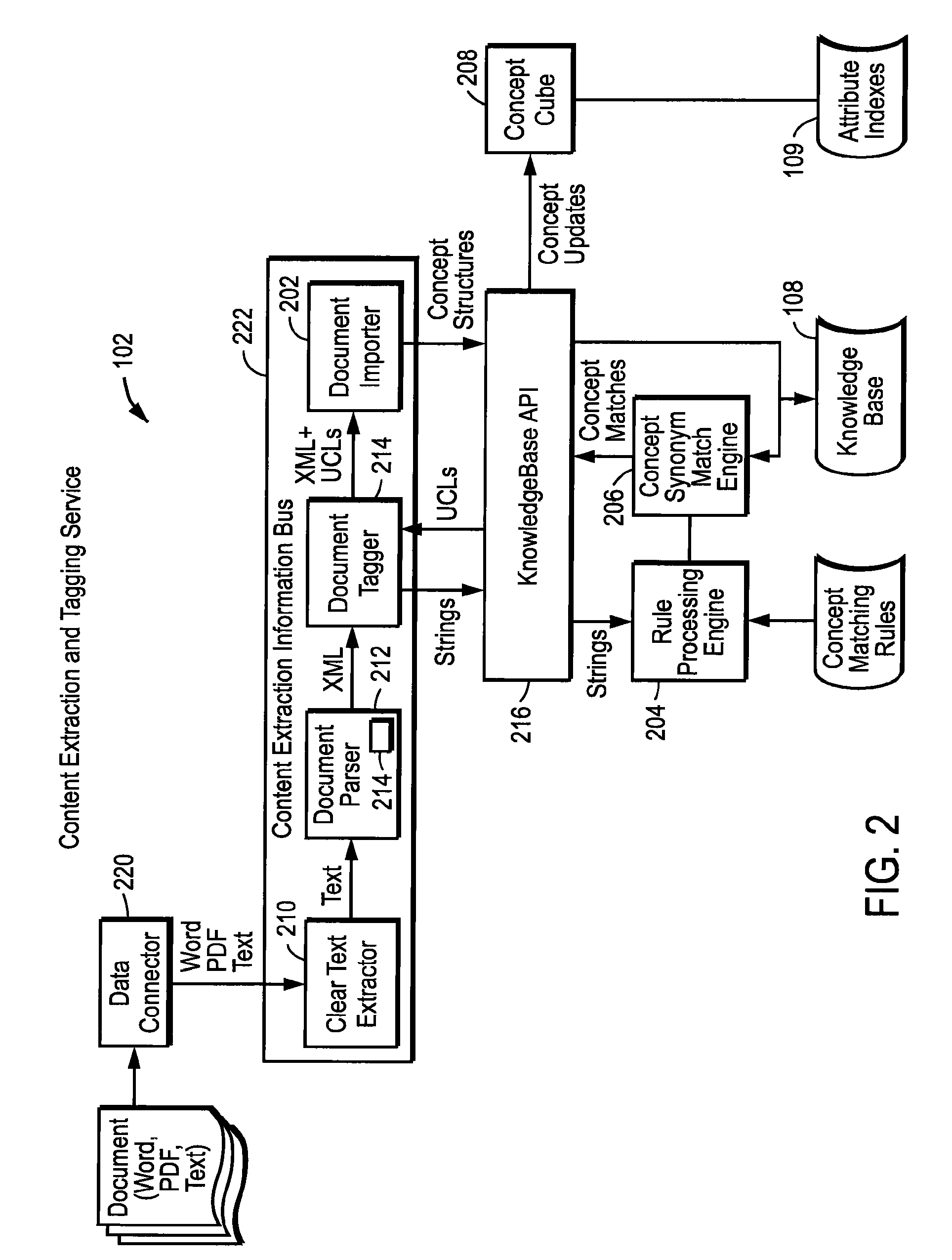Information retrieval systems face several daunting problems with delivering highly relevant and highly inclusive content in response to a user's query.
These problems include synonomy,
polysemy, spelling errors, abbreviations, and word concatenations in both the queries and the documents being queried.
Information retrieval systems further face problems with partial matches, incomplete queries, complex meanings that extend beyond the words entered in queries and account for the
relative significance of a users' query in a document, and the implicit preferences of the individuals conducting queries that were not specified in the query but can be inferred by the
information retrieval system.
These types of problems can be faced in the searching of various types of documents.
Users commonly do not know exactly what they are looking for when conducting a search.
Even if a user was complete and explicit about all of his parameters, the user might not find any matches because very few candidates would meet all of that user's criteria.
Moreover, users do not always know exactly what they are looking for until they see a few results, at which time they can refine their search.
Another problem faced in searching is that, given the exact same search, two different users may have an entirely different
ranking of the search results.
Accounting for hierarchical relationships when searching can also
pose a problem.
For example, when a user searches for people who went to U.C. Berkeley, the user expects to see people went to Haas Business School, or Boalt Law School within U.C. Berkeley. However, when a user searches for people who went to Haas, the user does not likely expect to find people who went to Boalt, or other departments of U.C. Berkeley, in general, outside of Haas.
A further problem is accounting for degree of match regarding search results.
Search systems often fail to consider hierarchical relationships in this analysis.
However, someone who has
Java experience will not necessarily have J2EE experience.
Further, many search systems do not support inclusion of scoring of documents under a hierarchy.
In addition, commonly search systems are not be able to support the ability to measure the relative importance of content in a document.
Another problem faced by search systems is that not all search criteria are equal, and not all documents are equal.
Furthermore, search systems are generally unable to mimic the way that a human performs a search or finds documents.
Setting “required,”“desired,” and “undesired” parameters can be helpful, but in many cases it is much more subtle and complicated to figure out which sets of concepts go together and are more important.
Additionally, the system should consider how long the candidate has held particular job positions (e.g., too short or too long may not be considered desirable).
Keyword searches and Boolean queries do not fully address some of the most basic full-text search problems, including synonymy,
polysemy, spelling errors, abbreviations, concatenations, and partial matches.
Synonymy can be addressed using Keyword expansion or elaborate Boolean queries, but very few people know how to perform these types of queries, and even when an elaborate query is constructed, it can still bring back the wrong results because of the other problems.
Polysemy can be addressed by contextualizing the search to a specific field, but results can be missed because of spelling errors, abbreviations, concatenations, partial matches, etc.
The limitations with this approach include the following:A low degree of accuracy, usually in the 60% to 80% rangeA significant amount of training is required in order for the classifiers to work properly.
This training requires manual intervention, either with selecting a set of documents to
train the classifier how to recognize a concept, or by “interpreting” the results of an automatic taxonomy generatorPoor results, or it simply doesn't work, with short phrases or a string with a few wordsNo ability to match an input query of a few words into concepts in the taxonomy—this defeats the purpose of concept-based searching in the first place
While automatic classification /
categorization software can provide some benefits, these limitations make it unlikely to provide sufficiently useful results.
While this approach is useful for extracting new concepts out of full text documents, it suffers from a number of limitations that make it unusable as a complete solution when dealing with résumés (as well as other documents), including the following:Content may not have any grammatical structure, and hence the
parsing simply failsVery brittle—If the text does not follow the grammatical rules, then concepts are missedDoes not work well when there is
ambiguity in the textLanguage dependentEven when you have successfully extracted a string containing a concept, it still has to be matched up against other known concepts, and in doing so, the concept must be normalized to account for spelling errors, synonyms,
word order, abbreviations, concatenations, etc.
While Entity Extraction using NLP is useful for finding (potentially) new concepts, it is generally not sufficient for finding existing, or known, concepts.
Unfortunately, with most search-related applications, especially when searching résumés, the above conditions do not hold.
Given these conditions, traditional
collaborative filtering techniques do not work with résumés, or other enterprise document search applications.
The current approaches described above do not effectively address this problem.
 Login to View More
Login to View More  Login to View More
Login to View More 


